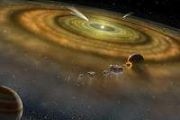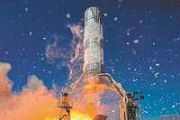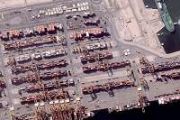Displaying items by tag: spacecraft
Nitrexo
Nitrexo’s Expertise
Thermal engineering, particularly in the space industry, is the expertise of Nitrexo, a start-up company based in Ireland. The company provides engineering and consultancy services, as well as digital solutions, thermal analysis reports, and various space products, to its clients.
Nitrexo’s competence involves using ESATAN-TMS® for conducting thermal analyses on space systems and sub-systems prior to the implementation of the thermal design. This ensures that the device or product that undergoes analysis and testing will function effectively under certain space conditions.
In addition, the company specializes in payloads, system level, solar panels, mechanisms, instruments, antennas, sensors, mirrors, electronics, optoelectronics devices for satellites, rockets, microelectronic components, and ground support equipment. Clients are also assured of receiving a thermal analysis reports on their projects.
Having completed projects for the European Space Agency and QinetiQ, Nitrexo’s strengths include running tests and verifications, as well as the integration of improvements to various engineering designs and processes.
Nitrexo’s Mission and Vision
Nitrexo believes in democratic ways of doing things to achieve competence and expertise, particularly in the field of space thermal engineering. In this regard, it uses education as an effective platform and tool for enhancing people’s capabilities.
Through its digital solutions, it aims to provide any interested party--whether business entities or individuals--equal access to educational and skills enhancement materials and applications that will help them create and innovate effectively.
Knowledge Management
Nitrexo guarantees that its training programs are not limited only to the transfer of theoretical knowledge to thermal engineers but that they also teach them how to accurately apply such knowledge in their field of work. Thus, Nitrexo trainings are designed to ensure a delightful user experience.
IT'S ALL ABOUT THE POWER
Designing satellites and space missions is complicated. There are all sorts of things to consider, like what are you trying to achieve, how many satellites do you need, what does your payload need to do, how much data do you need to get down, when do you need to downlink and what orbit will the satellites be in. And of course, you will need to power your satellite, ensuring that there is always enough power to run the satellite and its payload, run the on-board computers and operate the radios to download the data. Choosing the right Electrical Power System (EPS) for your satellites can be a complex and time-consuming exercise. But AAC Clyde Space can make it a lot easier to choose the right EPS solution.
THE NEXT GENERATION OF MARITIME COMMUNICATIONS
AAC Clyde Space AB, SAAB AB and ORBCOMM Inc. have today announced the development of the next generation of space based VDES system, marking the beginning of a new era in maritime communications. AAC Clyde Space AB will receive 17.0 MSEK in total, of which 12.2 MSEK is in the form of a grant from the Swedish Transport Administration, to finance the building, launch and commissioning of the first satellite in the project. This is intended to be the first satellite of a future constellation to provide a VDES service.
Terma GmbH
Terma GmbH is the German software and services company of Terma A/S www.terma.com that specialises in mission-critical products, software, and services for space missions.
It has more than 70 staff around Germany, experts in a wide range of systems and operations engineering for the support of space programmes and missions. It specialises in the development of customised ground/space segment applications such as Mission Control Systems, Operational Simulators, Automation, and Software Validation Systems. It provides professional engineering supports and training at the customer sites. Terma GmbH offers products and services in the emulation of the LEON family processors as well as in the Integration & System Testing of complex systems interacting at different geographical locations.
Please also find us on:
LinkedIn: http://www.linkedin.com/company/166334?trk=tyah
Twitter: https://twitter.com/Terma_Global
YouTube: http://www.youtube.com/user/TermaTV
AEHF satellite
Advanced Extremely High Frequency (AEHF) is a series of communications satellites operated by the United States Air Force Air Force Space Command.
The spacecraft is used to relay secure communications for the Armed Forces of the United States, the British Armed Forces, the Canadian Forces and the military of the Netherlands. The system consist of six spacecraft in geostationary orbits, of which two have been launched. AEHF is designed to replace the older Milstar system and will operate at 44 GHz Uplink (EHF band) and 20 GHz Downlink (SHF band).
AstroMast®
The AstroMast® is a self-deploying structure for spacecraft. It is a versatile product space proven with more than 50 successful deployments on programs such as MILSTAR, DMSP, Olympus, Mars Odyssey, GOES, and INSAT. It provides high performance in a coilable longeron mast and is available in a variety of sizes and configurations to suit your specific program needs.
The AstroMast is an extremely stiff and lightweight structure that can be manufactured in deployed diameters from 15 to 75 centimeters and as low as six kilograms mass.
Organisation: Astro Aerospace
Nautilus-X
Nautilus-X is a multi-mission space exploration vehicle imagined by the Technology Applications Assessment Team of NASA.
The spacecraft was designed for long duration (one to twenty-four months) exo-atmospheric space journeys for a six-person crew. In order to limit the effects of microgravity on human health, the spacecraft would be equipped with a centrifuge.
Nautilus-X stands for Non-Atmospheric Universal Transport Intended for Lengthy United States Exploration.
Galaxy (spacecraft)
Galaxy (previously Guardian) was a prototype space habitat designed by the American firm Bigelow Aerospace. It was intended to be the third spacecraft launched by the company in their efforts to create a commercial space station. Like other modules made by Bigelow Aerospace, Galaxy is based on the inflatable TransHab design by NASA, and was to be used for advanced systems testing before the company launched human-rated vehicles.
This project was cancelled in 2007.
Wide-field Infrared Survey Explorer (WISE)
Wide-field Infrared Survey Explorer (WISE) is a NASA infrared-wavelength astronomical space telescope launched on December 14, 2009, and decommissioned/hibernated on February 17, 2011 when its transmitter was turned off.
WISE was an Earth-orbiting satellite with a 40 cm (16 in) diameter infrared telescope, which performed an all-sky astronomical survey with images in 3.4, 4.6, 12 and 22 μm wavelength range bands, over 10 months. The initial mission length was limited by its hydrogen coolant, but a secondary post-cryogenic mission continued for four more months.
Dawn (spacecraft)
Dawn is a robotic NASA spacecraft tasked with the exploration and study of Vesta and Ceres, the two largest members of the asteroid belt.
Launched on September 27, 2007, the probe entered orbit around Vesta on July 16, 2011.
Dawn left Vesta on September 5, 2012, on a course for Ceres, which it is scheduled to reach in February 2015.
Managed by NASA's Jet Propulsion Laboratory, Dawn is NASA’s first purely exploratory mission to use ion propulsion. The spacecraft was constructed with some European cooperation, with components contributed by partners in Germany, Italy, and the Netherlands. Dawn was the first spacecraft to visit Vesta, and is scheduled to be the first to visit Ceres. If it successfully reaches Ceres, it will also be the first spacecraft to orbit two separate extra terrestrial bodies, using ion thrusters to travel between its targets. Previous multi-target missions using conventional drives, such as the Voyager program, were restricted to flybys.










































